Deniz Engin
Zero-Shot and Few-Shot Video Question Answering with Multi-Modal Prompts
Sep 27, 2023



Abstract:Recent vision-language models are driven by large-scale pretrained models. However, adapting pretrained models on limited data presents challenges such as overfitting, catastrophic forgetting, and the cross-modal gap between vision and language. We introduce a parameter-efficient method to address these challenges, combining multimodal prompt learning and a transformer-based mapping network, while keeping the pretrained models frozen. Our experiments on several video question answering benchmarks demonstrate the superiority of our approach in terms of performance and parameter efficiency on both zero-shot and few-shot settings. Our code is available at https://engindeniz.github.io/vitis.
On the hidden treasure of dialog in video question answering
Mar 26, 2021
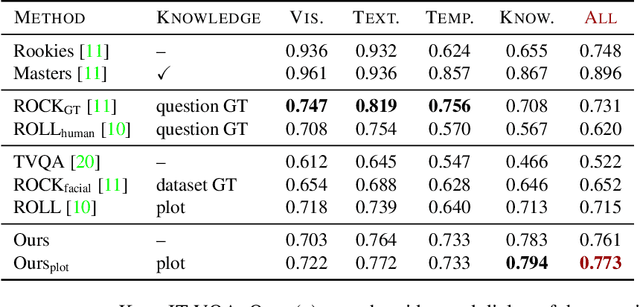
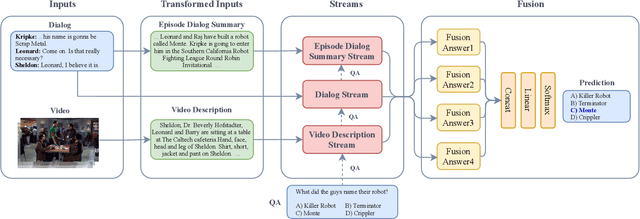

Abstract:High-level understanding of stories in video such as movies and TV shows from raw data is extremely challenging. Modern video question answering (VideoQA) systems often use additional human-made sources like plot synopses, scripts, video descriptions or knowledge bases. In this work, we present a new approach to understand the whole story without such external sources. The secret lies in the dialog: unlike any prior work, we treat dialog as a noisy source to be converted into text description via dialog summarization, much like recent methods treat video. The input of each modality is encoded by transformers independently, and a simple fusion method combines all modalities, using soft temporal attention for localization over long inputs. Our model outperforms the state of the art on the KnowIT VQA dataset by a large margin, without using question-specific human annotation or human-made plot summaries. It even outperforms human evaluators who have never watched any whole episode before.
Offline Signature Verification on Real-World Documents
Apr 25, 2020
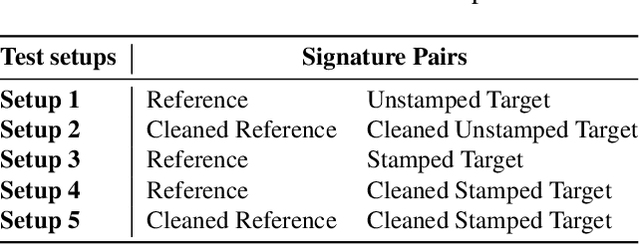
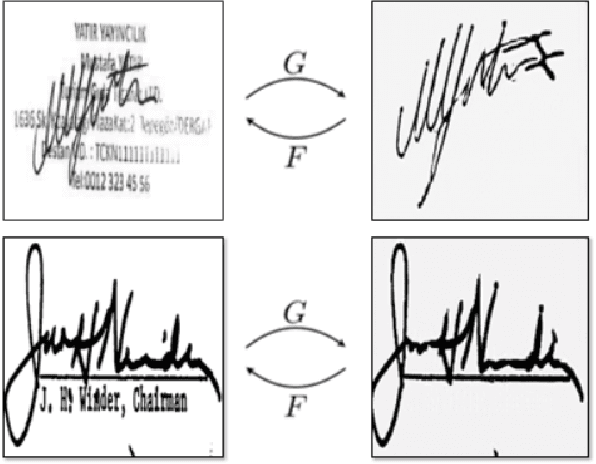

Abstract:Research on offline signature verification has explored a large variety of methods on multiple signature datasets, which are collected under controlled conditions. However, these datasets may not fully reflect the characteristics of the signatures in some practical use cases. Real-world signatures extracted from the formal documents may contain different types of occlusions, for example, stamps, company seals, ruling lines, and signature boxes. Moreover, they may have very high intra-class variations, where even genuine signatures resemble forgeries. In this paper, we address a real-world writer independent offline signature verification problem, in which, a bank's customers' transaction request documents that contain their occluded signatures are compared with their clean reference signatures. Our proposed method consists of two main components, a stamp cleaning method based on CycleGAN and signature representation based on CNNs. We extensively evaluate different verification setups, fine-tuning strategies, and signature representation approaches to have a thorough analysis of the problem. Moreover, we conduct a human evaluation to show the challenging nature of the problem. We run experiments both on our custom dataset, as well as on the publicly available Tobacco-800 dataset. The experimental results validate the difficulty of offline signature verification on real-world documents. However, by employing the stamp cleaning process, we improve the signature verification performance significantly.
Cycle-Dehaze: Enhanced CycleGAN for Single Image Dehazing
May 14, 2018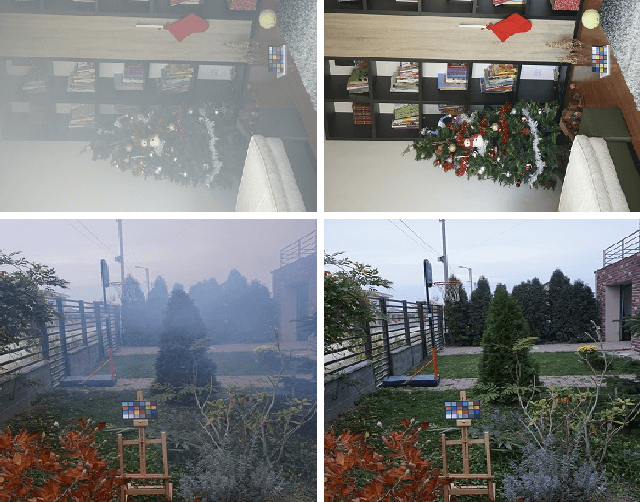

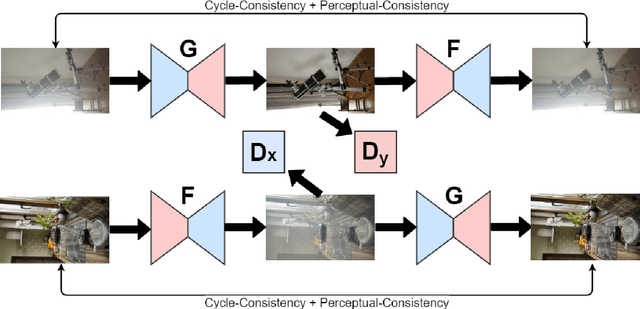

Abstract:In this paper, we present an end-to-end network, called Cycle-Dehaze, for single image dehazing problem, which does not require pairs of hazy and corresponding ground truth images for training. That is, we train the network by feeding clean and hazy images in an unpaired manner. Moreover, the proposed approach does not rely on estimation of the atmospheric scattering model parameters. Our method enhances CycleGAN formulation by combining cycle-consistency and perceptual losses in order to improve the quality of textural information recovery and generate visually better haze-free images. Typically, deep learning models for dehazing take low resolution images as input and produce low resolution outputs. However, in the NTIRE 2018 challenge on single image dehazing, high resolution images were provided. Therefore, we apply bicubic downscaling. After obtaining low-resolution outputs from the network, we utilize the Laplacian pyramid to upscale the output images to the original resolution. We conduct experiments on NYU-Depth, I-HAZE, and O-HAZE datasets. Extensive experiments demonstrate that the proposed approach improves CycleGAN method both quantitatively and qualitatively.
 Add to Chrome
Add to Chrome Add to Firefox
Add to Firefox Add to Edge
Add to Edge